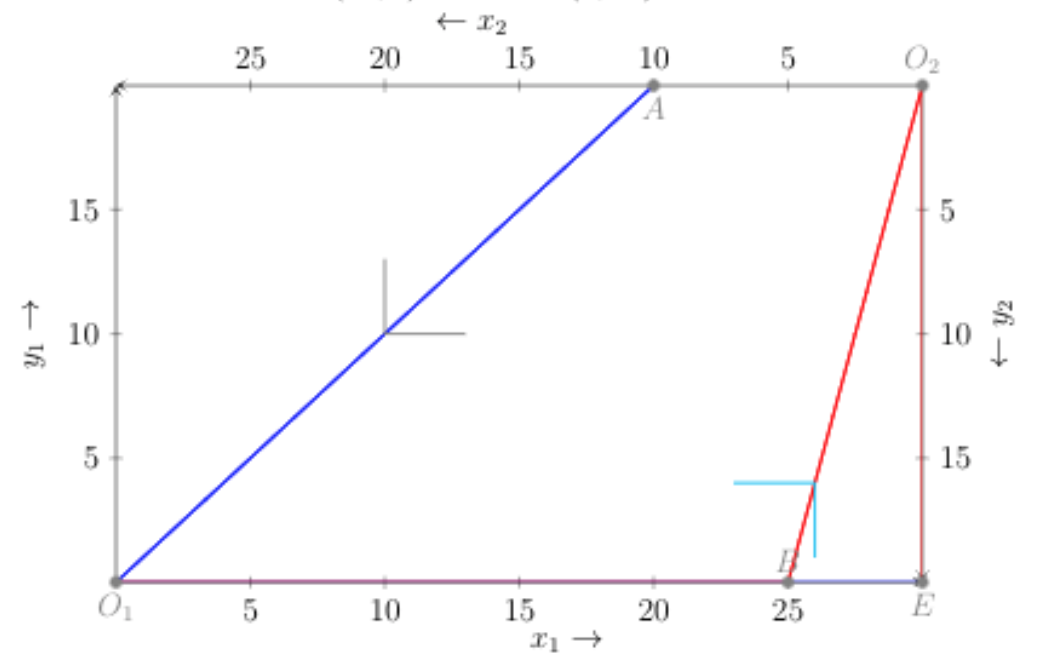QUESTION:
Consider simple two-person, two-good economy in which agents’ utility functions are given by
$U_1(x_{11}, x_{21}) = min\{x_{11}, x_{21}\} $, and $U_2(x_{12}, x_{22}) = min\{4x_{12}, x_{22}\} $.
Endowments are w1 =(30,0) and w2 =(0,20).
If neither agents can have negative consumption of either good, what is Walrasian equilibrium?
SOLUTION:
With Leontiev preferences, the indifference curves of both agents are right-angles. For agent 1 their vertices lie on the line $x_{11} = x_{21} $, whereas, for agent 2, they lie on the line $x_{22} = 4x_{12}$. These lines are respective offer curves of both agents when both prices are strictly positive. For the case when one of the prices is zero, we have following offer curves:
————
$OC_1(P_1, P_2)=$
if $(P_1, P_2) \in $ {0} $\times R_+ $ then $OC_1(P_1, P_2)= \{(x_{11}, w_{21}): x_{11} > w_{21} \}$,
if $(P_1, P_2) \in $ $R_+ \times $ {0} then $OC_1(P_1, P_2)= \{(w_{11}, x_{21}) : x_{21} > w_{11} \}$,
$OC_2(P_1, P_2)=$
if $(P_1, P_2) \in $ {0} $\times R_+ $ then $OC_2(P_1, P_2)= \{(x_{11}, w_{21}) : x_{11} > (1/4) w_{21} \} $,
if $(P_1, P_2) \in $ $R_+ \times $ {0} then $OC_2(P_1, P_2)= \{(w_{11}, x_{21}) : x_{21} > 4 w_{11} \} $,
my question is how to write this offer curve? I don't ask to solve this question. I dont understand the point where the offer curves are written. Especially I find to be difficult to write the OC2 for the second consumer. I mean writing OC_2 is especially difficult for me. If you show how to write offer curves, I will really glad. Thank you.
